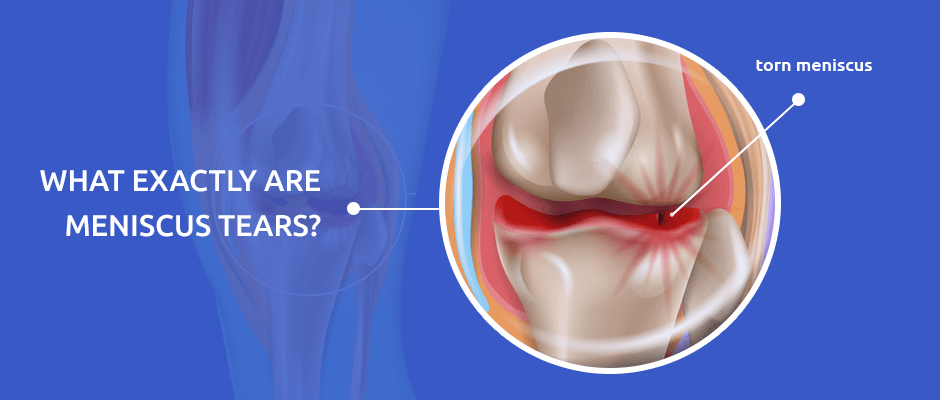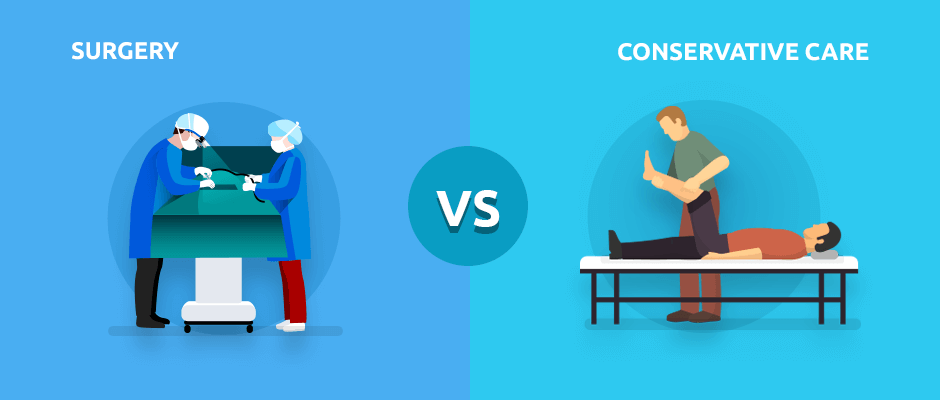Knee pain due to degeneration of the knee joints is a common complaint among middle-aged people, and lesions to the meniscus are frequently to blame. Patients with torn menisci are often referred for arthroscopic surgery, but surgery of any type is costly and poses health risks. Moreover, there are no guarantees that surgical interventions for knee pain will resolve the issue.
Conservative physical therapy treatment is a non-invasive alternative to surgery that is less expensive and less risky. Numerous studies have been conducted to evaluate the effectiveness of conservative treatment for meniscus tears in middle-aged and older adults, with promising results.
The menisci in your knees are C-shaped rubbery cartilage structures that act as shock absorbers during any type of physical activity. They make it possible for your shin bone and thigh bone to glide smoothly over each other behind your knee cap without friction. A torn meniscus is often referred to as “torn cartilage.”
In younger people, meniscus tears are often sports-related, occurring during rotational movements on a loaded knee, such as a rapid directional change or pivot on the basketball court, or during high-impact activities.
As you age, your knee cartilage can degenerate, becoming thinner and dryer. Degenerative menisci are more prone to tearing, even during everyday movements like rising from a chair or stepping off a curb. Arthritis can also play a role in meniscus tears by roughening the bone surface of the femur, causing it to rub against the meniscus and damage it.
A torn meniscus can be painful, and can cause your knee joint to become unstable, increasing your risk of further degeneration and injury from falling. If you suspect you may have a torn meniscus, you should not ignore it.
Several factors come into play when it comes to repairing torn knee cartilage, including:
- location and severity of damage
- degree of cartilage degeneration
- physical activity level of the patient
- nutritional status of the patient
- patient compliance with conservative interventions
It is generally recommended that you try conservative treatment before agreeing to invasive surgery. If your cartilage is healthy, you are physically active and the necessary nutrients are available, you may be able to fully recover from a torn meniscus tear and restore full, pain-free function.
If you do opt for surgery, much will depend on the type, location and degree of tearing. When possible, the surgeon will stitch the torn cartilage together. If your cartilage is extremely worn, the surgeon may simply remove the damaged tissue, which can potentially cause knee stiffness and reduce function.
There are several studies that compare the long-term outcomes of surgery vs conservative care, and most agree that at a 2-year followup, there is little difference between the two in terms of function and patient feedback. A brand new study published in Osteoarthritis and Cartilage (2020) decided to do a 5-year followup, to see if the effects remained similar over time.
The study subjects were 140 non-arthritic adults aged 35 to 60 with MRI-verified degenerative meniscal tears. The patients underwent either surgical treatment or conservative care. The conservative group did exercises to strengthen the knee structures 2-3 times per week for 12 weeks after diagnosis, while the other group had arthroscopic surgery.
Evaluative criteria included:
- Muscle strength at 3 and 12 months after treatment — the surgery group scored -3% at 3 months and +3% at 12 months; the conservative group scored +11% at both markers.
- Pain reduction at 2 and 5 years after treatment — the surgery group reported 32% and 33% at 2 and 5 years respectively; the conservative group reported 36% and 35% respectively.
- Radiographic evidence of osteoarthritis (OA) at 5 years — 16.9% for the surgery group and 15.5% for the conservative group.
- Absence of knee pain and OA at 5 years — 62% for the surgery group and 61% for the conservative group.
The results of the study reveal little difference between the two groups, except in the strength category, which was significantly higher at both 3 months and 12 months after treatment in the conservative care group.
Given that surgery poses higher risks and greater expense with no apparent long-term benefits, we can assume that conservative care is a better choice for most middle-aged patients with meniscus tears.
Most knee pain in adults can benefit from conservative care. Visit NYDNRehab for physical therapy in NYC. Our team of knee pain specialists takes a holistic and individualized approach to patient care. We embrace the latest technologies and innovative therapies to ensure every patient reaches their rehabilitation goals. Our ultimate goal is to restore pain-free function, so you can enjoy your very best quality of life.
About the Author
Dr. Lev Kalika is clinical director of NYDNRehab, located in Manhattan. Lev Kalika is the author of multiple medical publications and research, and an international expert in the field of rehabilitative sonography, ultrasound guided dry needling and sports medicine Dr. Kalika works with athletes, runners, dancers and mainstream clients to relieve pain, rehabilitate injuries, enhance performance and minimize the risk of injuries. His clinic features some of the most technologically advanced equipment in the world, rarely found in a private clinic.
Source:
Berg, Bjørnar, et al. “Development of osteoarthritis in patients with degenerative meniscal tears treated with exercise therapy or surgery. A randomized controlled trial.” Osteoarthritis and Cartilage (2020).



























































